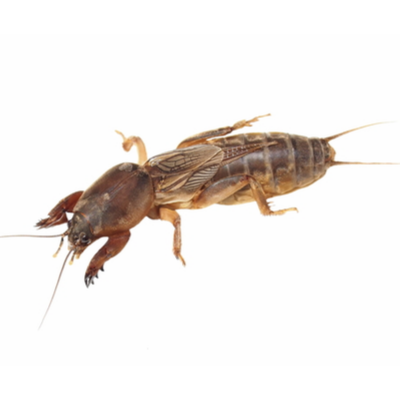
Color: Brown, tan, reddish brown.
Size: Up to 1-½ inches.
Manufacturer Recommended Products And Treatment For Mole Cricket Control
Pests need food, water, and shelter. Often the problem may be solved just by removing these key items. Before even thinking about chemical pest control, it is important to be aware of
| Conducive Condition | Recommendation | |
| 1 | Tree branches on house | Keep tree branches away from house to reduce pest access |
| 2 | Firewood next to foundation | Keep firewood away from house to reduce pest harborage |
| 3 | Debris on crawlspace/next to foundation | Remove wood debris to reduce termite ha rborage area |
| 4 | Excessive plant cover, stump, etc. | Providing spacing between plant cover and structure |
| 5 | Soil above the foundation Ii ne | Keep soil below top of foundation to reduce harbo rage areas |
| 6 | Wood-to-ground contact | Keep soil from touching wood to eliminate termite access |
| 7 | Debris on roof/full gutter | Keep gutter & roof free of debris to reduce insect harborage |
| 8 | Standi ng water near/under structure | Eliminate standing water to reduce pest harbo rage |
| 9 | Mo isture problem under structure | Increase ventilation to reduce pest harbo rage area |
| 10 | Openi ngs at plumbi ng & electronics | Seal opening to reduce pest access |
| 11 | Excessive gaps at windows/doors | Seal gaps to reduce pest access |
| 12 | Lea ky plumb ing fixtures | Repair to reduce moisture for pests |
| 13 | Keep garbage cans covered | Covered to reduce attraction of insects of vertebrate pests |
| 14 | Mo isture damage wood | Repair rotten or damaged wood to reduce insect harborage |
| 15 | Grocery bags stored improperly | Seal paper sacks in containers to reduce i nsect ha rborage areas |
| 16 | Pet food unsealed or left out | Keep pet food in sealed containers and unavailable to pests |
| 17 | Excessive storage conditions | Keep storage areas uncluttered and manageable |
| 18 | Debris below kick plates | Remove kick plates to reduce rodent harborage |
About Mole Cricket Control
Mole crickets, which damage lawns and gardens, are best controlled biologically, chemically, and culturally. Entomopathogenic nematodes or natural predators can control these pests in sandy soils, which are more difficult. Chemical solutions should be used selectively to avoid damaging insects that are helpful to the nature.
How to Control & Get Rid of Mole Crickets?
Early identification and treatment are the 1st step to mole cricket management. Soapy water flushes can reveal the presence of mole crickets by bringing them to the surface. Once identified, applying baits or insecticides during early summer can be particularly effective as the crickets are still young and vulnerable. Remember, the key to successful control lies in combining these methods with proper lawn maintenance to prevent future infestations.
The Best Mole Cricket Pest Control for Sale
Cricket species and infestation stage determine pest control product selection. Bifenthrin and imidacloprid kill mole crickets. Mole crickets are most active in the late afternoon or evening; therefore, baits should be applied then before they decay.
Natural Repellents & Non-Toxic Options
Mole crickets can be controlled safely and effectively with natural repellents like neem oil. Neem oil repels mole crickets and other garden pests. Applying diluted neem oil to lawns helps control mole cricket numbers without the negative impacts of chemical insecticides.
Why Choose Pest Control Products Depot to Control Mole Crickets?
Pest Control Products Depot sells mole cricket-specific products. Granular and liquid treatments work at distinct mole cricket development stages. The website provides thorough product descriptions and application instructions to help consumers find the correct solution.
Are Mole Cricket Chemical Control Products Safe to Use?
Chemical controls work; however their safety depends on active components and application. Following label instructions, household products are safe. To reduce health and environmental dangers, users should wear protective gear and use non-chemical alternatives.
Their Importance in Soil Health Management
Mole crickets prefer sandy or loamy soils for burrowing. Mole crickets tunnel less in compact or clay-heavy soils, hence soil health is vital to limiting their populations. Organic matter improves soil structure, making mole crickets harder to travel and establish populations. Regular soil testing and amendments can reduce mole cricket breeding.
Biological control manages mole cricket populations using natural enemies. This strategy can be long-term sustainable and eco-friendly. Parasitic nematodes can control mole crickets. During spring or fall, these nematodes effectively kill mole crickets by infiltrating their bodies.
Buy Mole Cricket Pest Control Online Now!
Purchasing mole cricket control products online offers convenience and often access to a broader range of options. Pest Control Products Depot offers thorough product information, user instructions, and direct shipment for speedy, educated purchases. Effective mole cricket control requires labeled products.
18 products



















